Taihang Xinyu Art Museum by Wang Chong Studio
The Taihang Xinyu Art Museum is intricately incorporated into the rocky topography of Shibanyan Town, Linzhou, in China. Designed by Wang Chong Studio, the architecture blends seamlessly with the fabric of the village, revitalizing old warehouses and enhancing the landscape interface. The design team sought to create a structure that organically grows out of the terrain, effortlessly blending the old and new elements on the cramped and compact site. The sustainable reuse of local old stone materials has been employed to revive traditional stone crafts and create a multi-level public open space. The building does not conform to the typical symbols of public space used in modern Western art exhibitions, such as the white square space or the nostalgic sloping roof. Instead, it aims to generate a space that evokes a sense of everyday life, all the while bringing the visitor into a closer connection with the natural beauty.
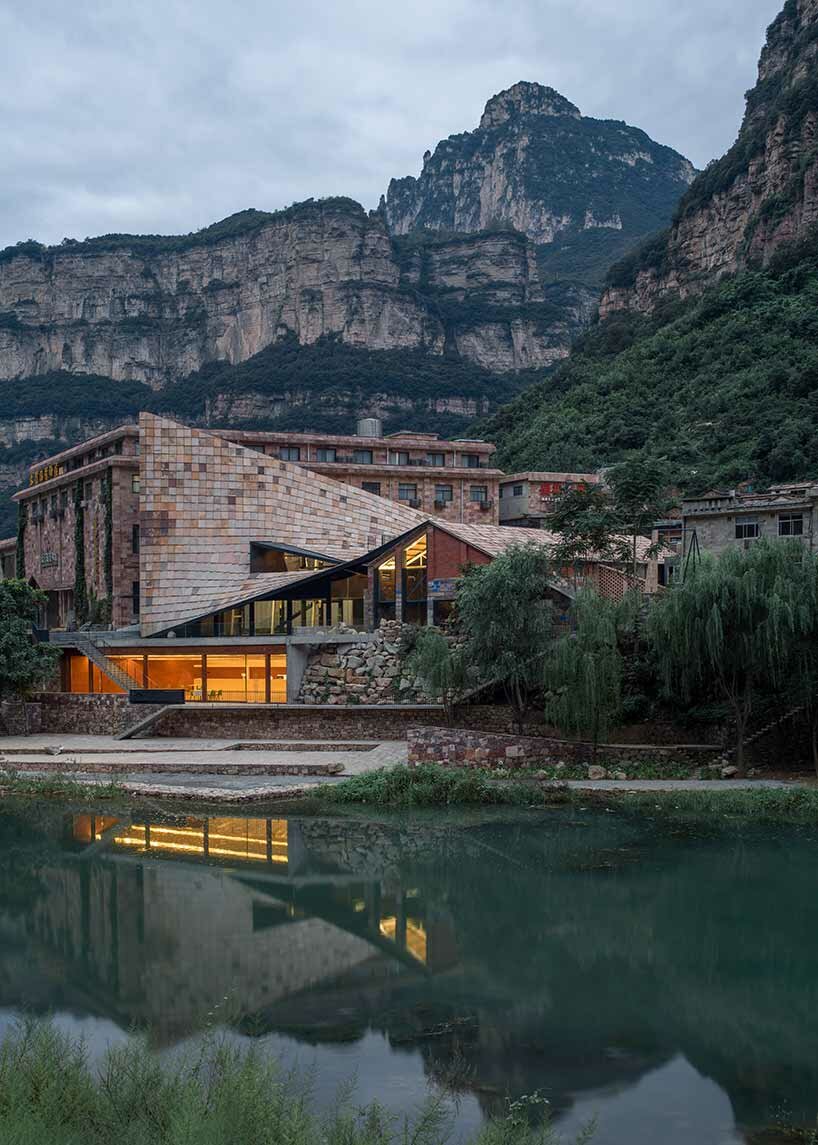
all images © Zhu Yumeng Coppak Studio
a spatial interface that combines old and new
The structure seamlessly incorporates the old warehouse on the north side and connects people between the west-side street and the east-side waterfront via a courtyard, resulting in a cohesive town texture. Looking at the building from a horizontal perspective, there exists a difference in height between the tall building on the south side and the old warehouse on the north side. Combining the new building with a small volume would undermine its imposing stature, while a larger volume would create coordination issues with the warehouse on the north side. Thus, leveraging the terrain advantage on the south side, the art museum cleverly wraps the old warehouse with a triangular surface to achieve seamless integration. An arc is then incorporated, following the eaves of the warehouse and extending to the ground.
‘We define the interface of the museum as the ‘porous’ and ‘sloping’ near mountain, and the zigzag extended path, which communicates the CangxiRiver and the distant mountain, creates a sense of distance that retreats layer by layer and triggers a sense of mystery in the high and far view,’ shared Wang Chong Studio (more here).
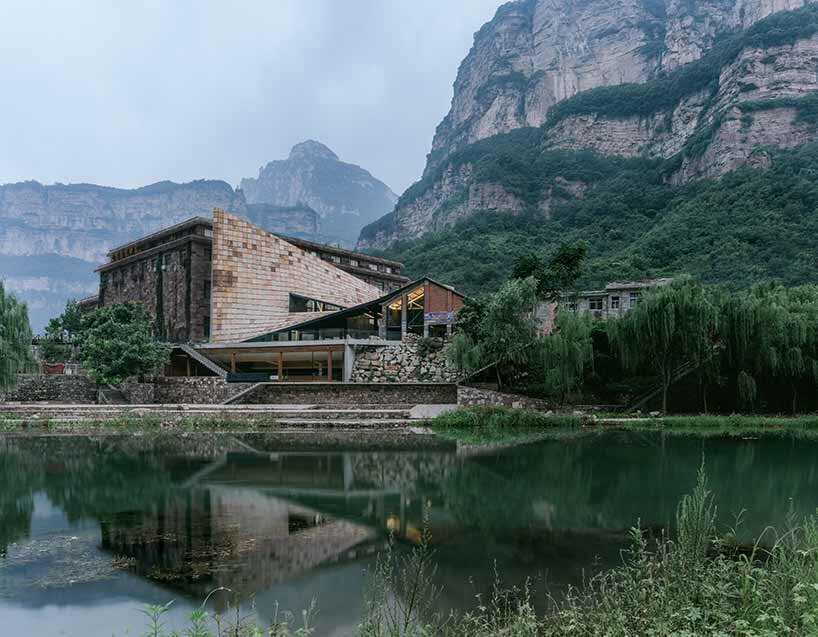
the stones produced during hillside excavation were utilized for building the waterside embankment
Sustainable reuse of local old stone materials
The subtly curved surface and bright stone color allow the structure to stand out from the regular texture of the village. This makes it easily noticeable, yet it does not compromise the natural beauty of the surroundings. Instead, it enhances the aura of harmonious coexistence between man-made and nature, injecting vitality into the landscape. Moreover, with this layout, the building appears to have developed organically out of the mountain environment, seamlessly echoing its surroundings. It exudes a strong ‘sense of place’, conveying a wildness that resonates with the context of Taihang, giving the impression that it has been standing and growing for many years.
Viewed through the lens of visual communication, slates and stones serve not only as construction materials but also as a display medium. The experimental stone construction method is rooted in the local traditions and realistic requirements of cost-effective construction. It represents a sustainable design approach that curbs material and resource consumption. Furthermore, according to the architects, the local construction method also reshapes the simple and rustic aesthetics of daily life.
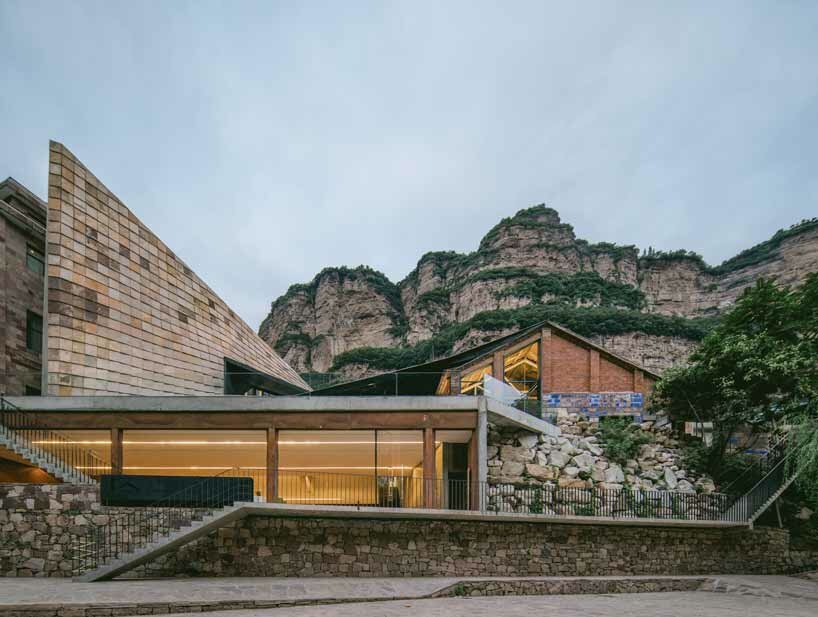
the old and new facades are exchanged harmoniously
The architects excavated the hillside beneath the art museum, sculpting it into a beautiful restaurant space. The concrete retaining walls on the north and south sides of the restaurant are irregular. During the excavation process, the team encountered numerous huge stones skillfully incorporated into the restaurant’s design, fitting seamlessly with the local environment. To further emphasize the restaurant’s connection to its surroundings, the red terrazzo floor was crafted from red sandstone aggregate found locally.
The art museum’s outdoor space embodies ambiguity, with various entrances and paths connecting the riverbank and the street. Additionally, there are multi-level open platforms on the water’s side, including a channel that directs people from the tourist parking lot on the north side to the town. A barbecue booth is conveniently situated for tourists and supports the art gallery’s operations. During the day, students visit the space and enliven it as they engage in a variety of pursuits, from sketching to socializing and games.
The restaurant’s roof is transformed into a venue for art conferences and social activities, and at night it becomes a stage for community square dances. The building’s mountain-viewing terrace and the walkway on the roof (the wedding corridor) encourage multiple imaginative interpretations of public life. The goal is to stimulate the Medici effect, launching a public art field characterized by inclusiveness and humanistic care.
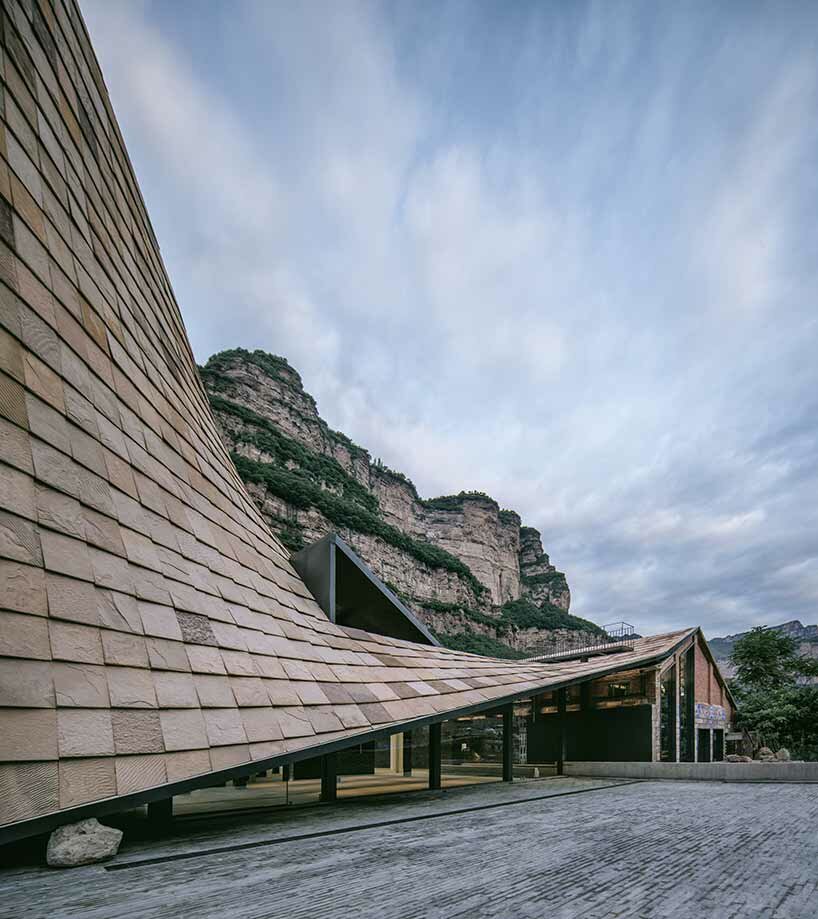
a large number of old slates were collected for recycling
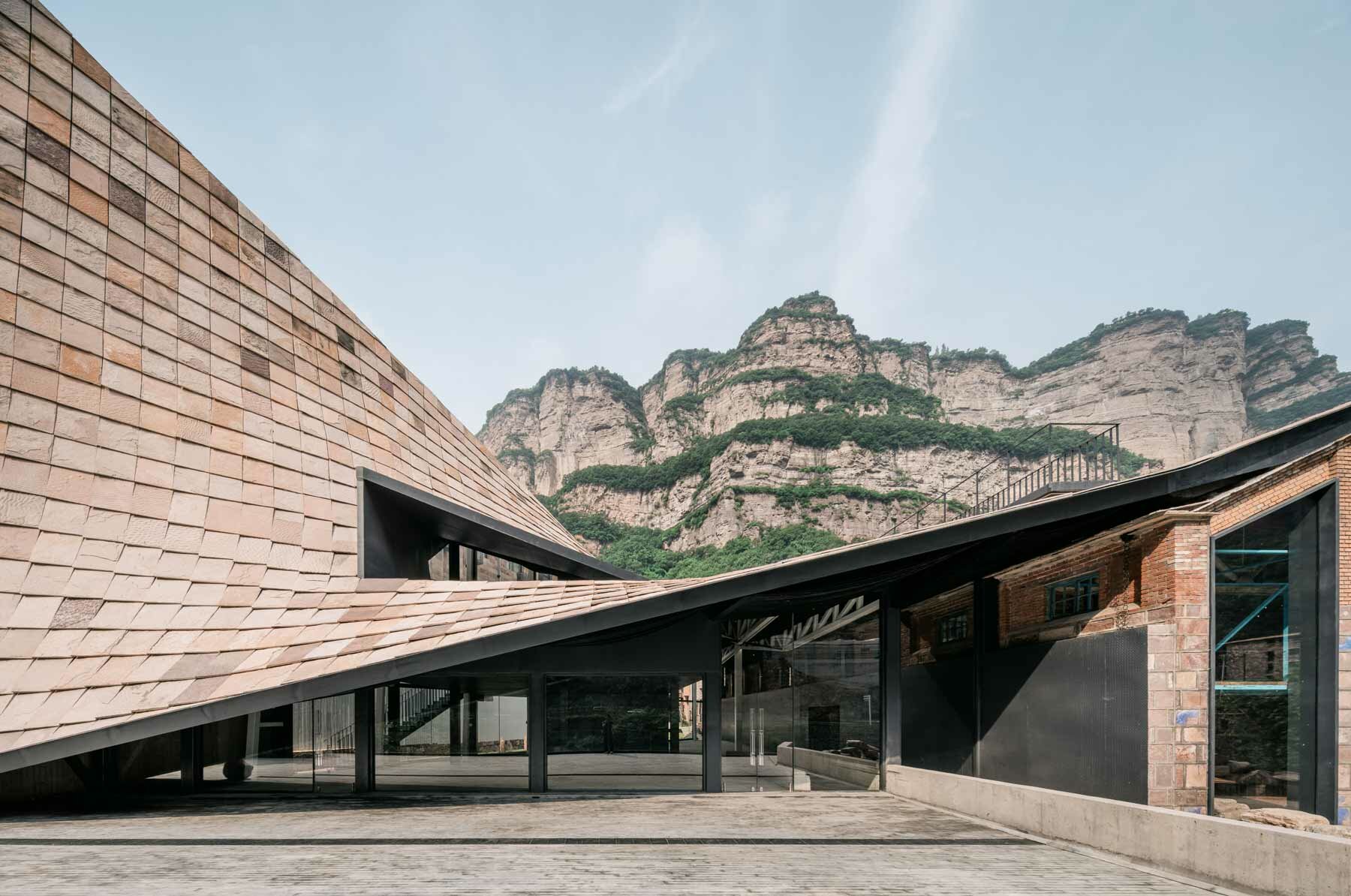
leveraging the terrain advantage on the south side, the art museum cleverly wraps the old warehouse with a triangular surface
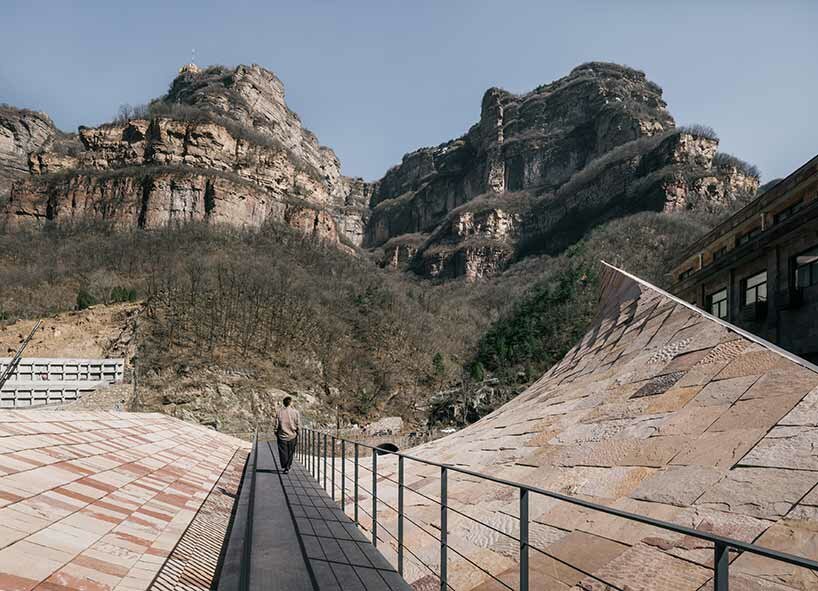
curved alleys, long bridges, folded paths, and stone foundations bring visitors closer to the natural landscape
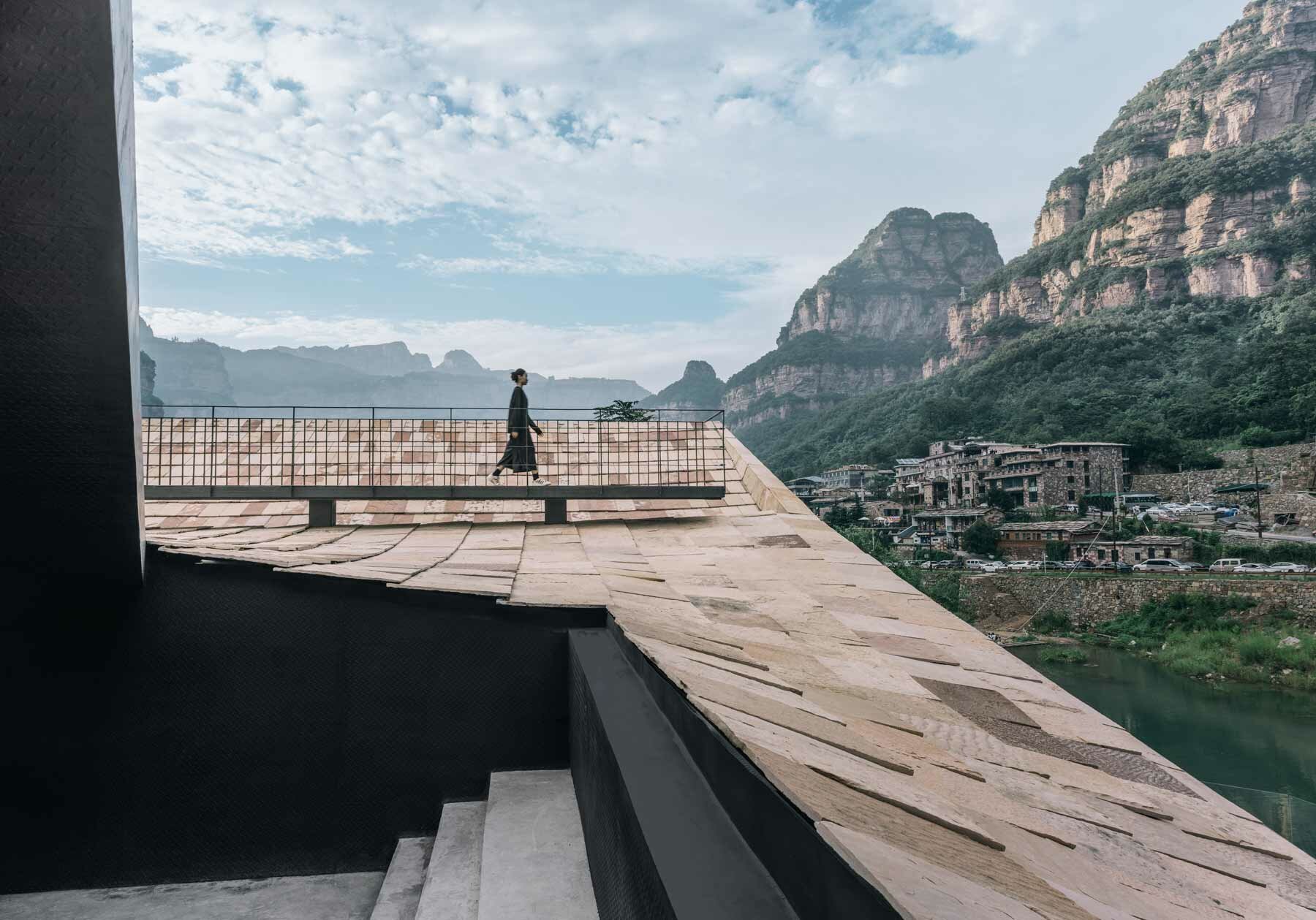
various entrances and paths connect the riverbank and the street
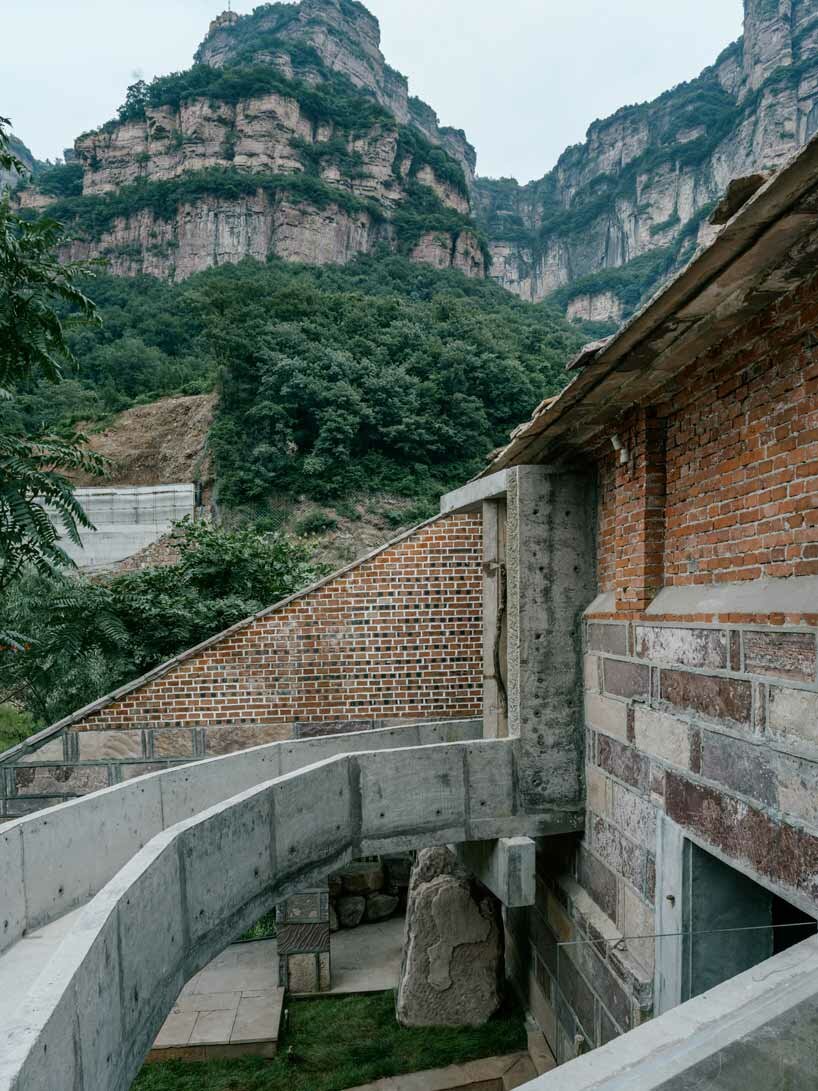
the pebbles become the foundation of the building structure
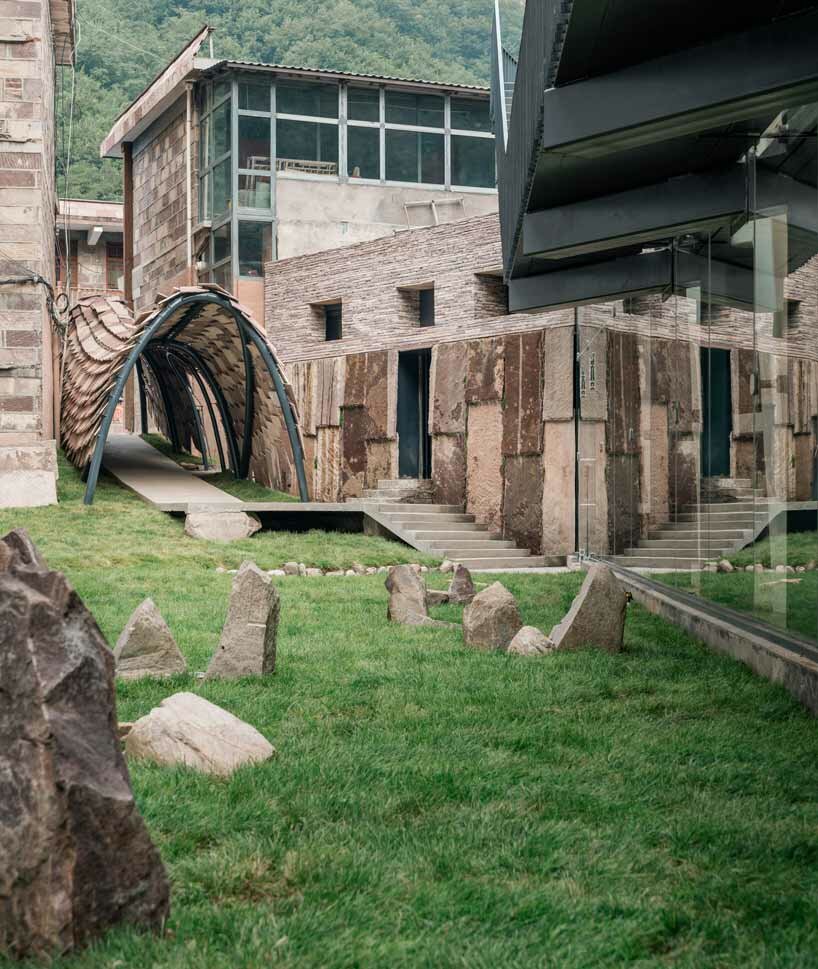
a series of stone slabs are suspended by a steel cable, forming the entrance to the cave on the road on the west side
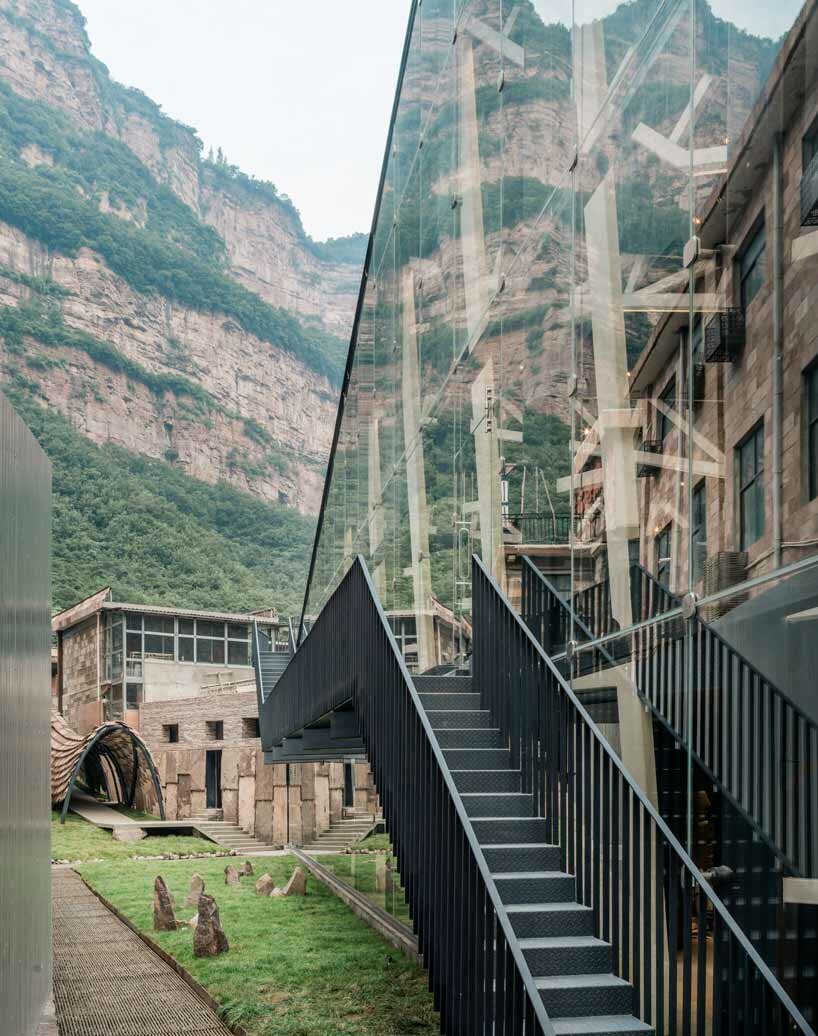
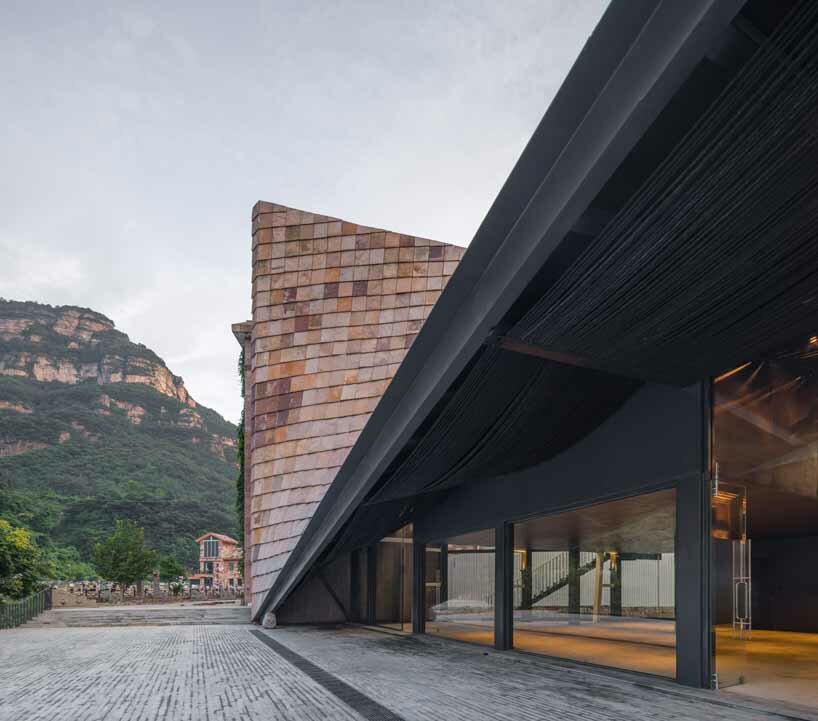
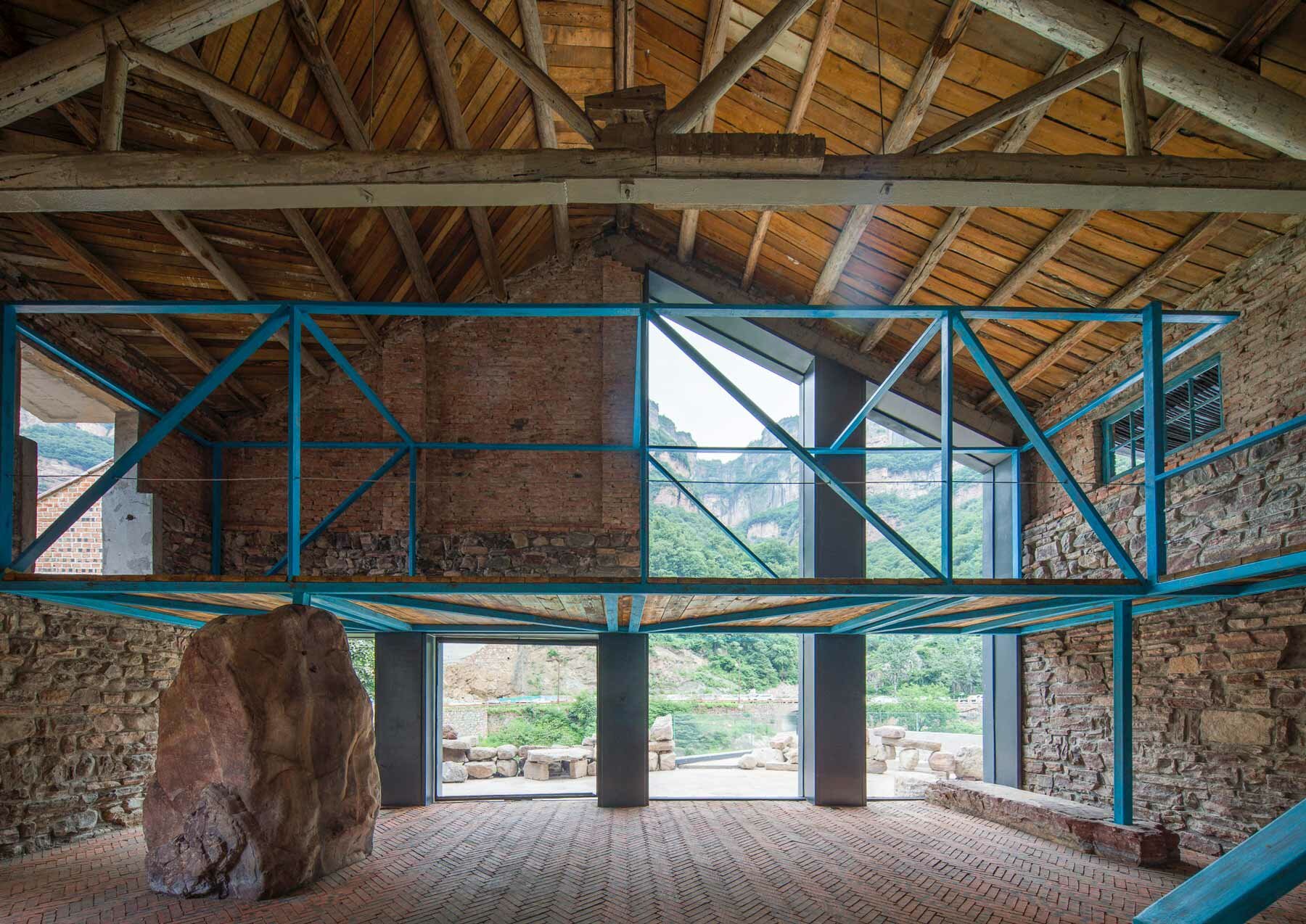
the huge stones excavated and collected in the stream are used as the supporting foundation for the warehouse attic
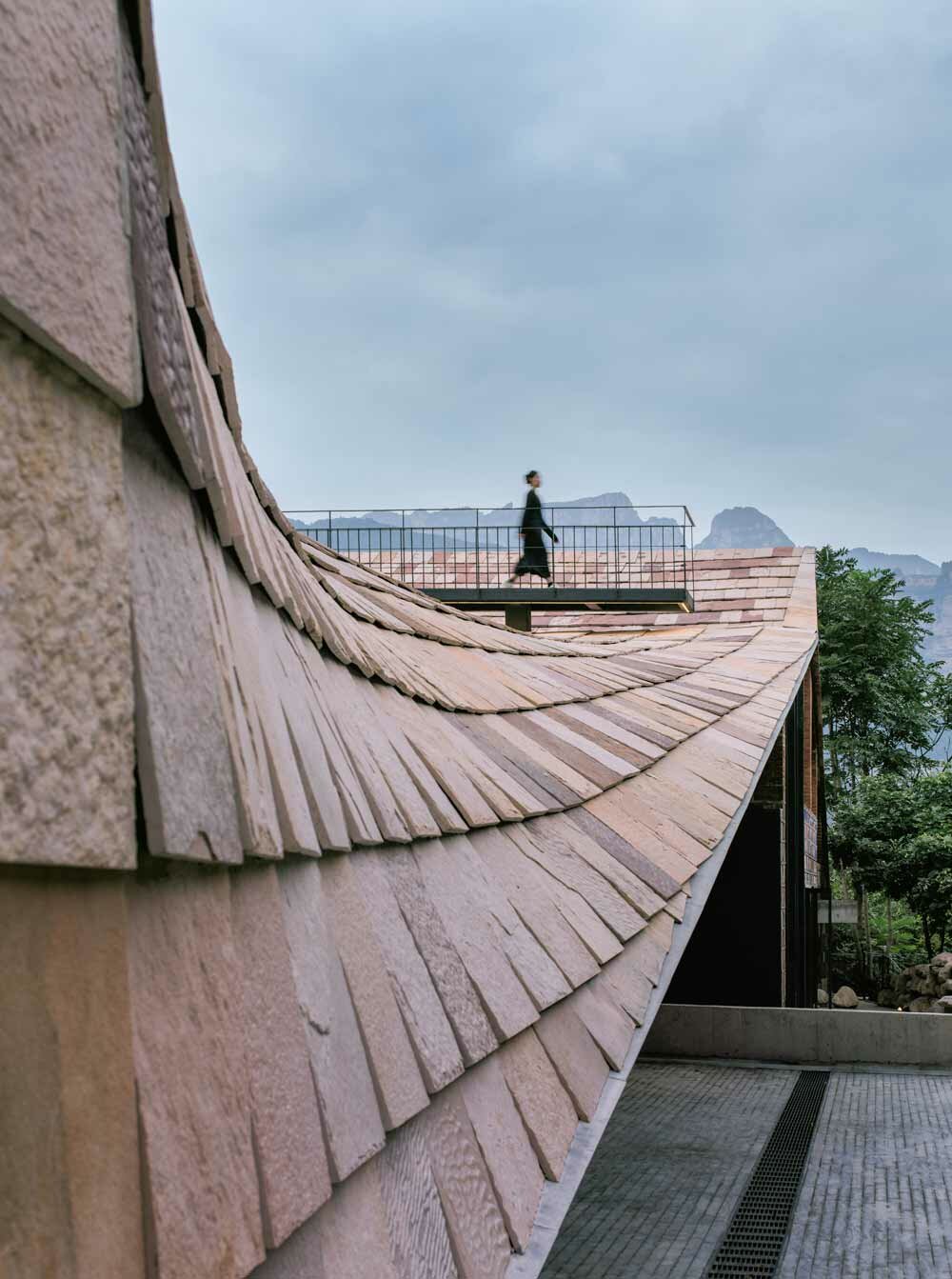
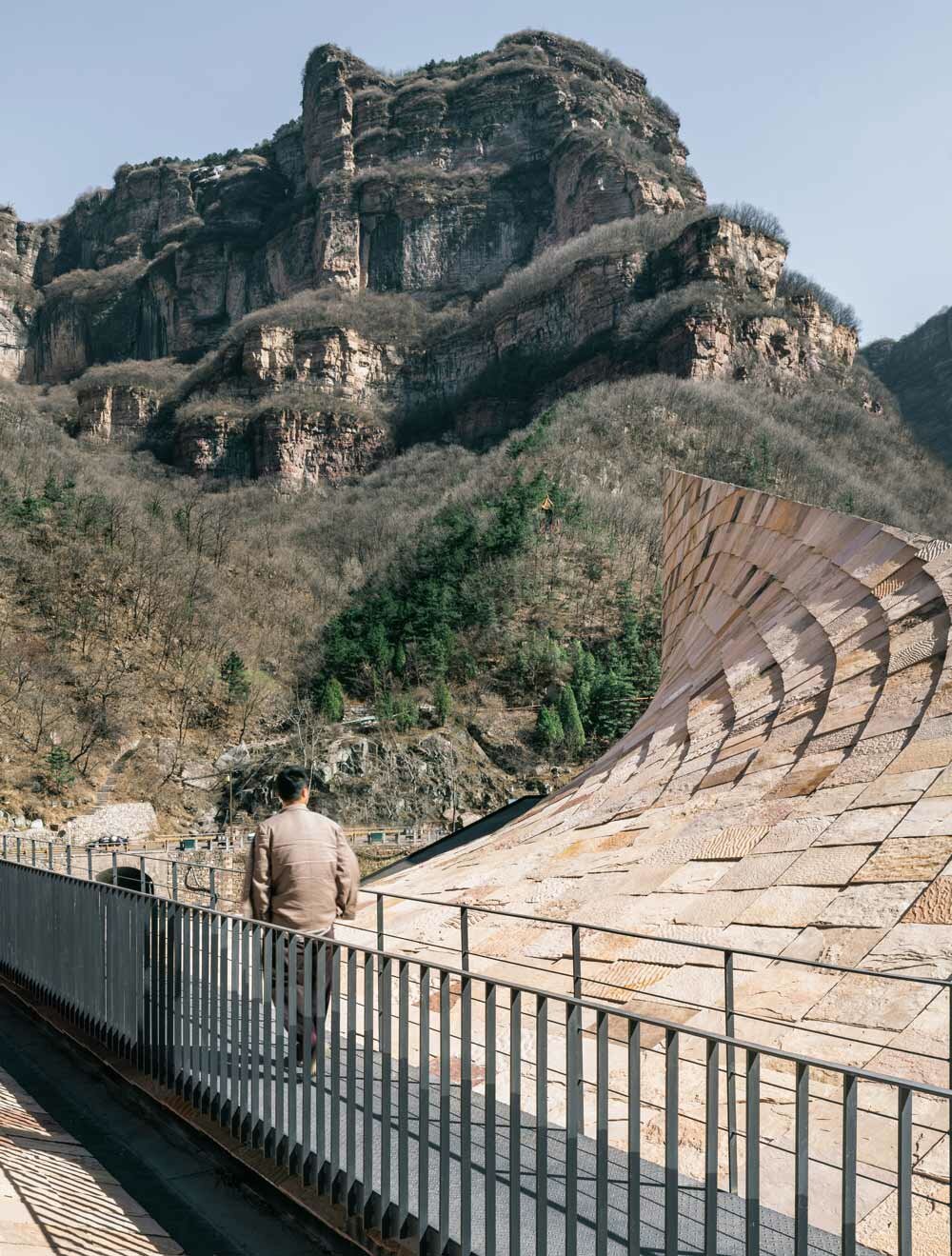


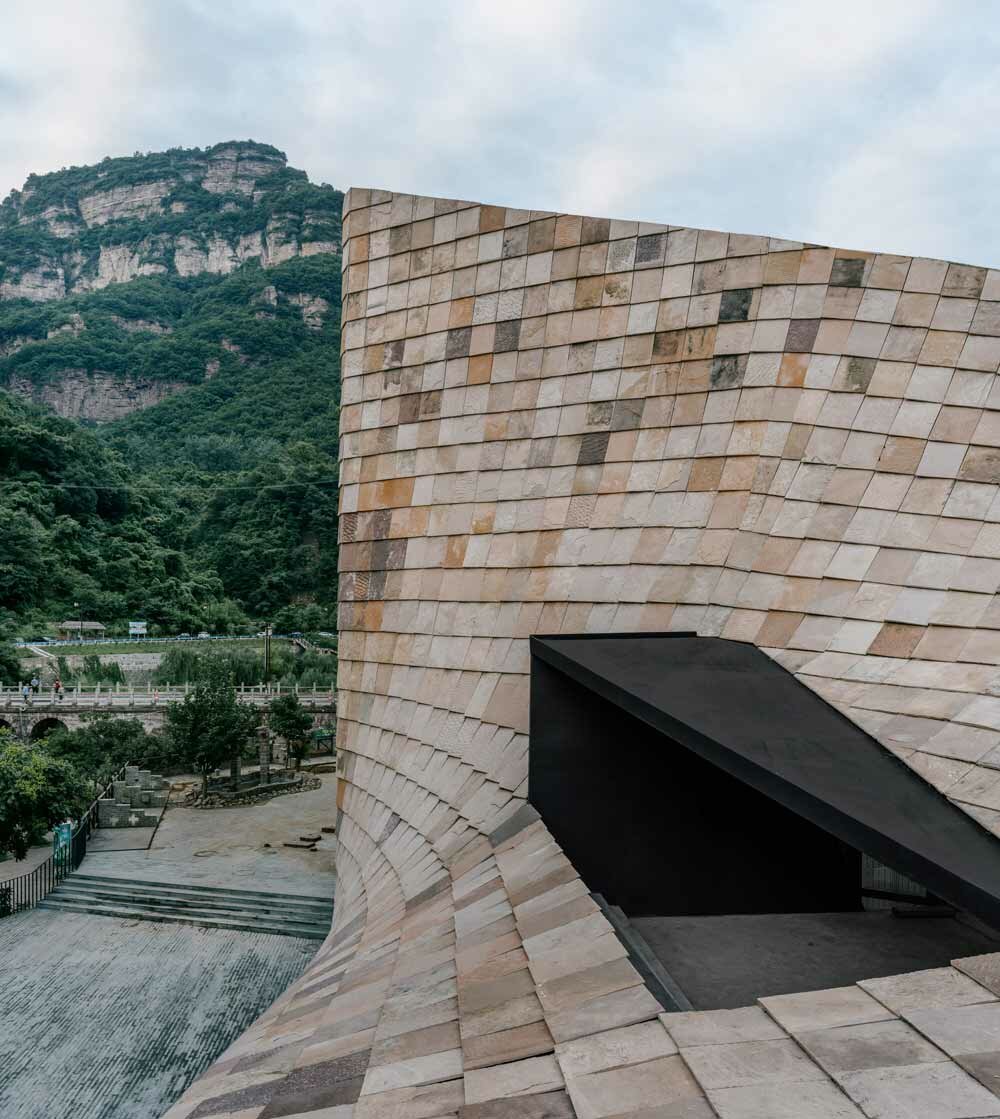
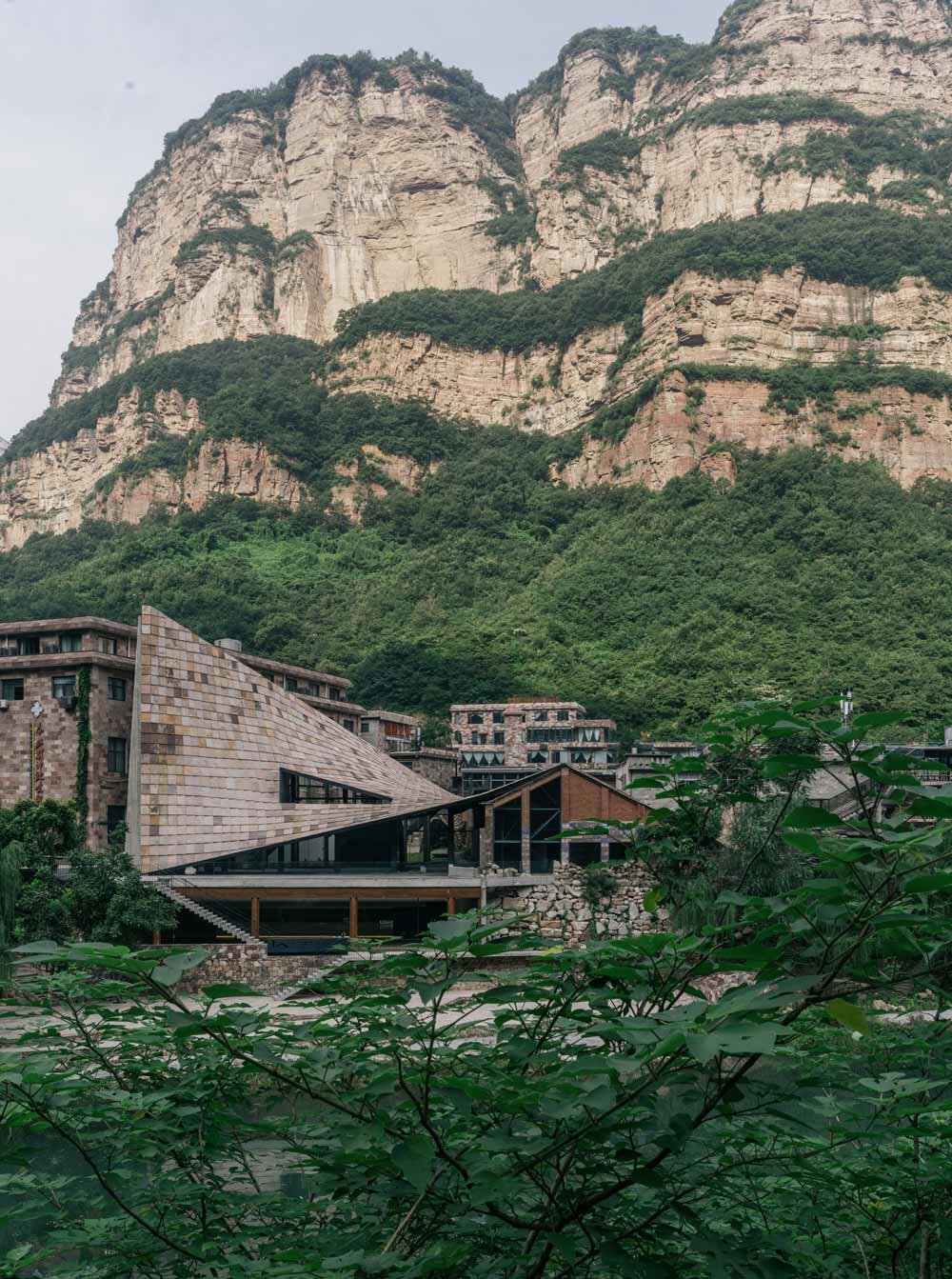
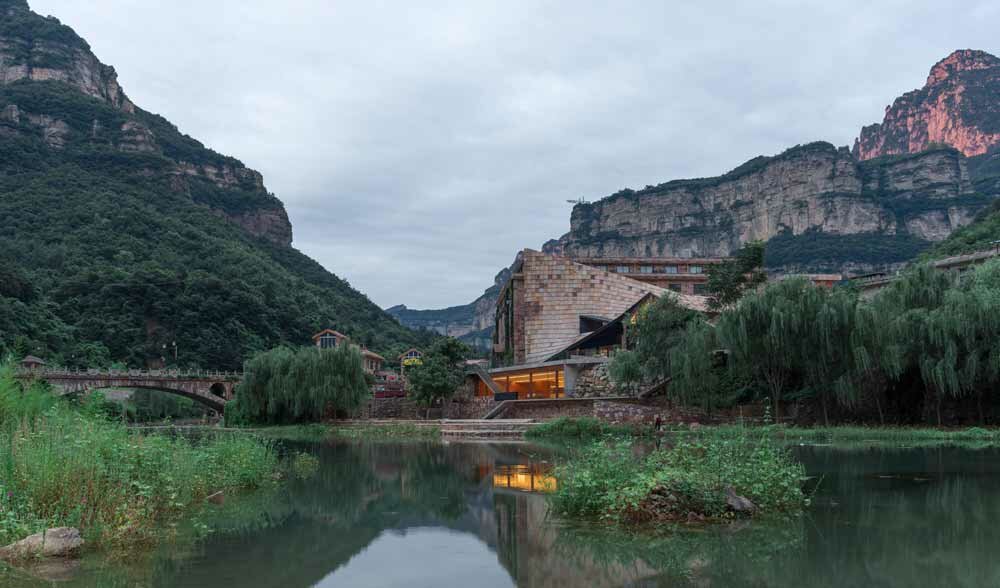
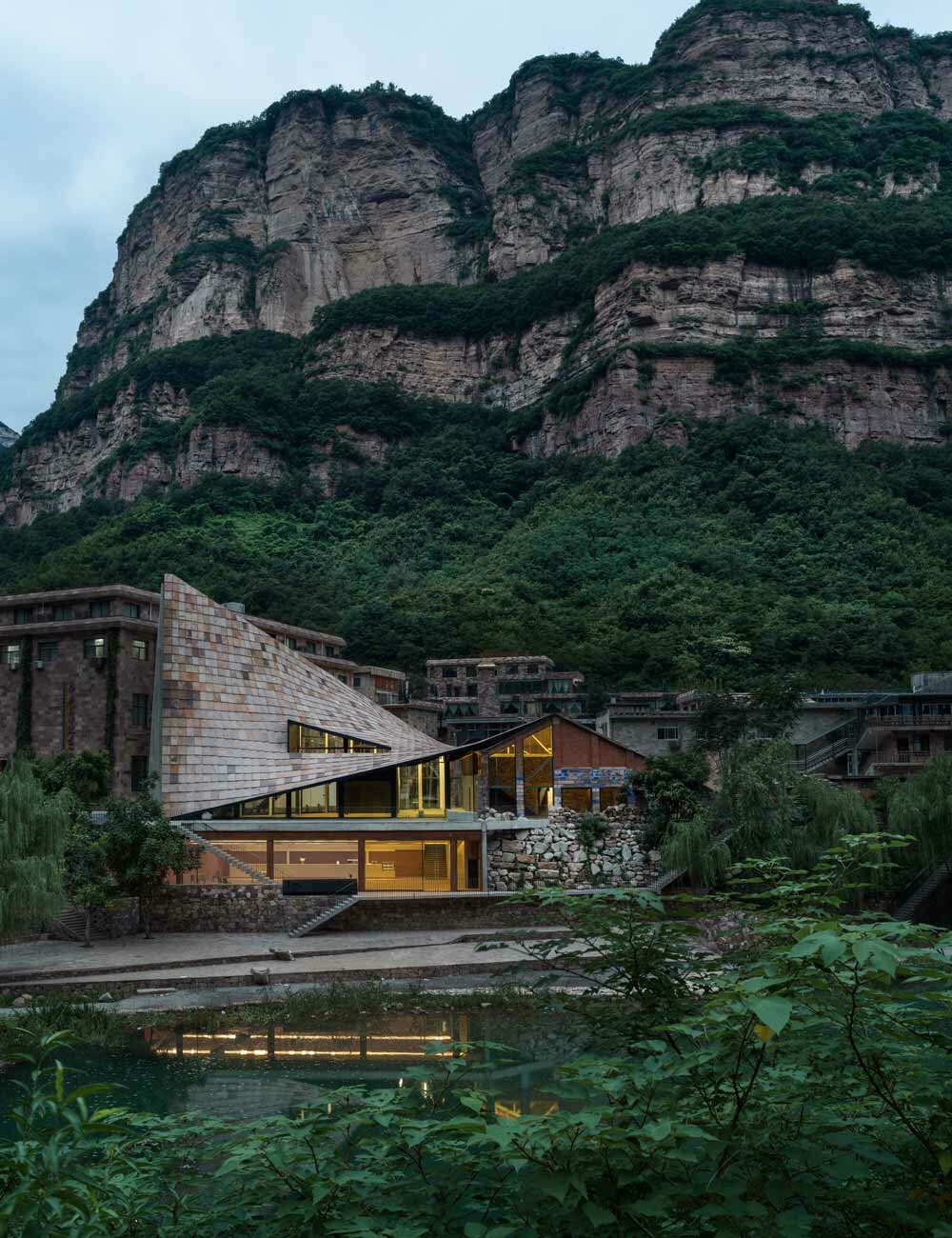

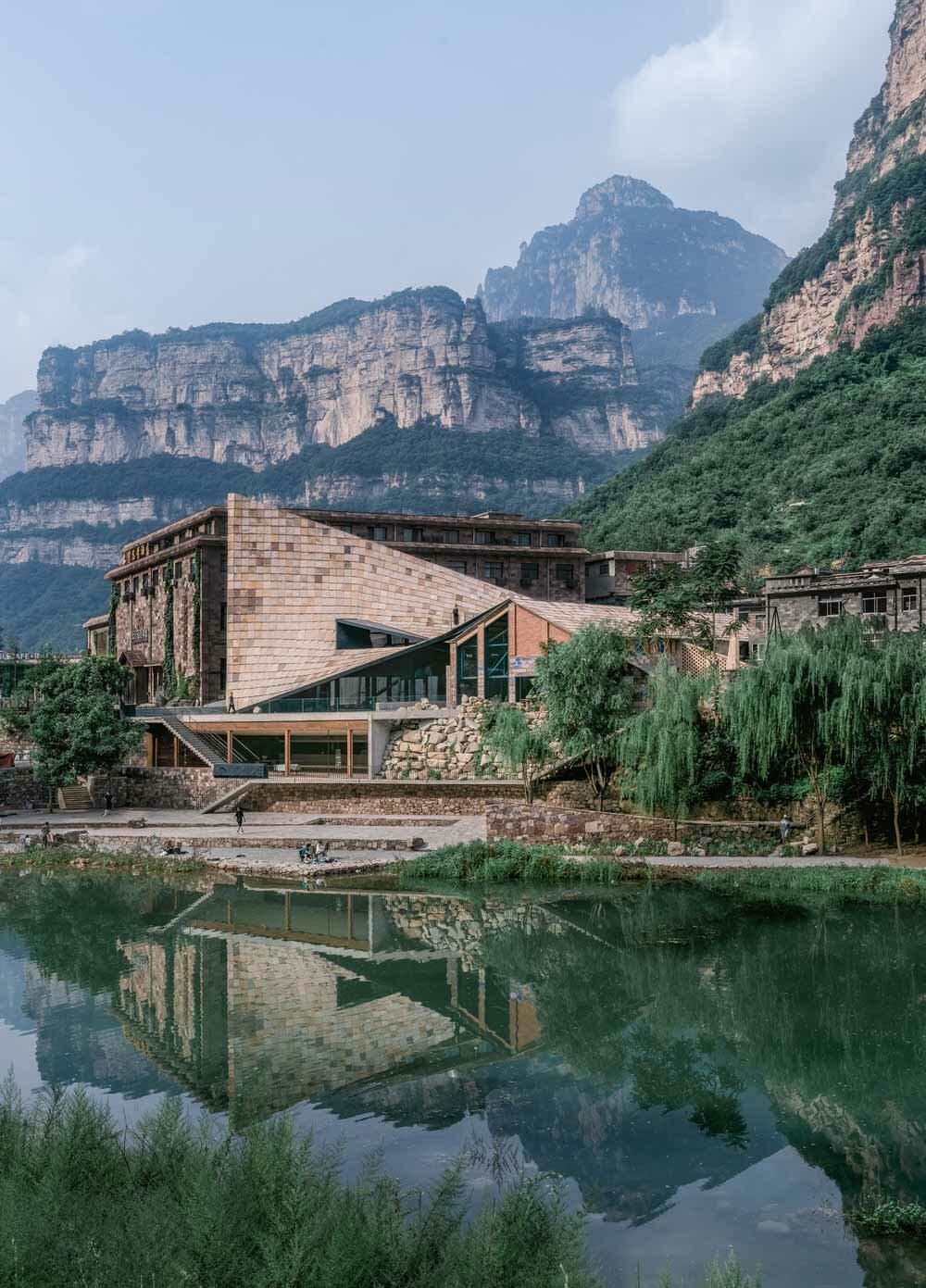
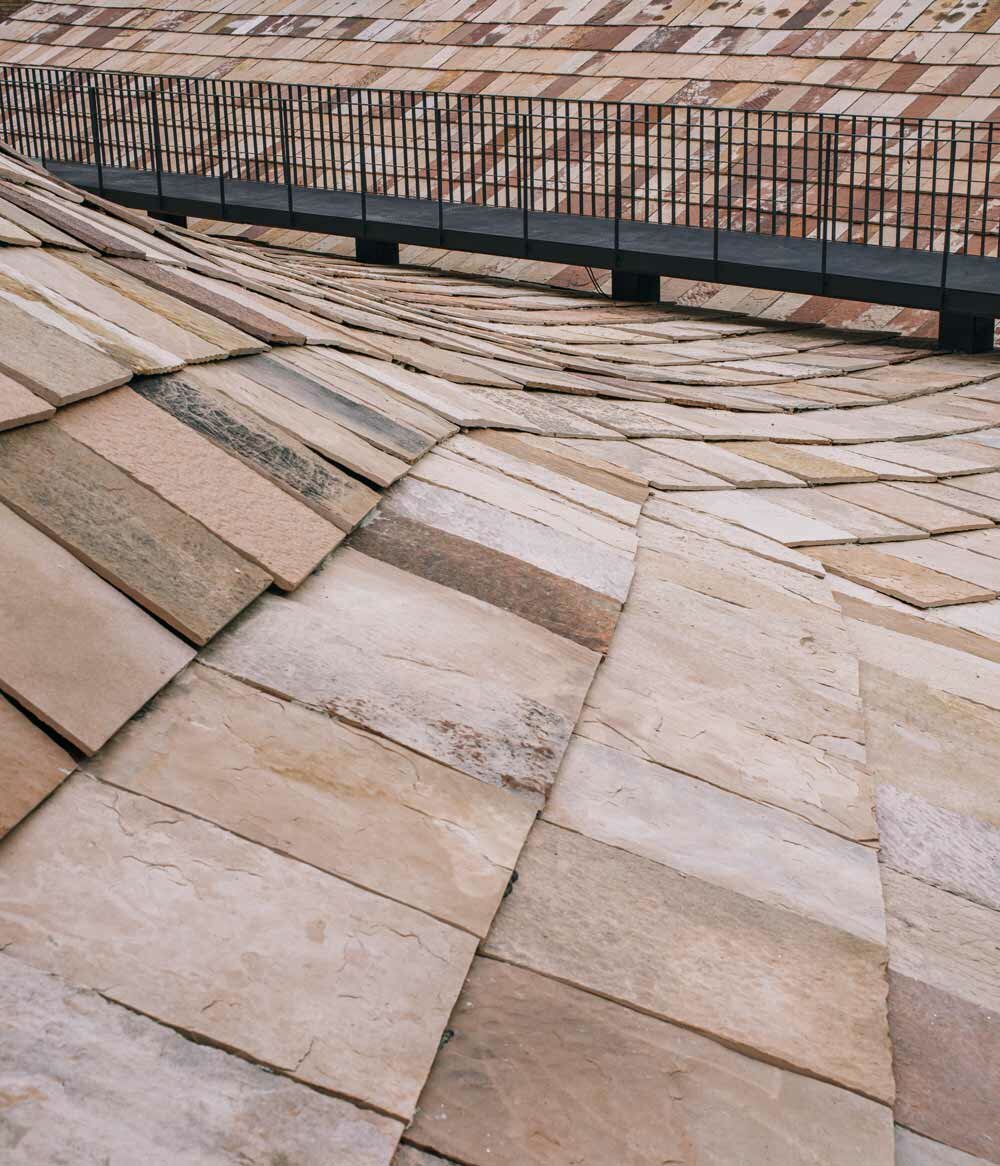
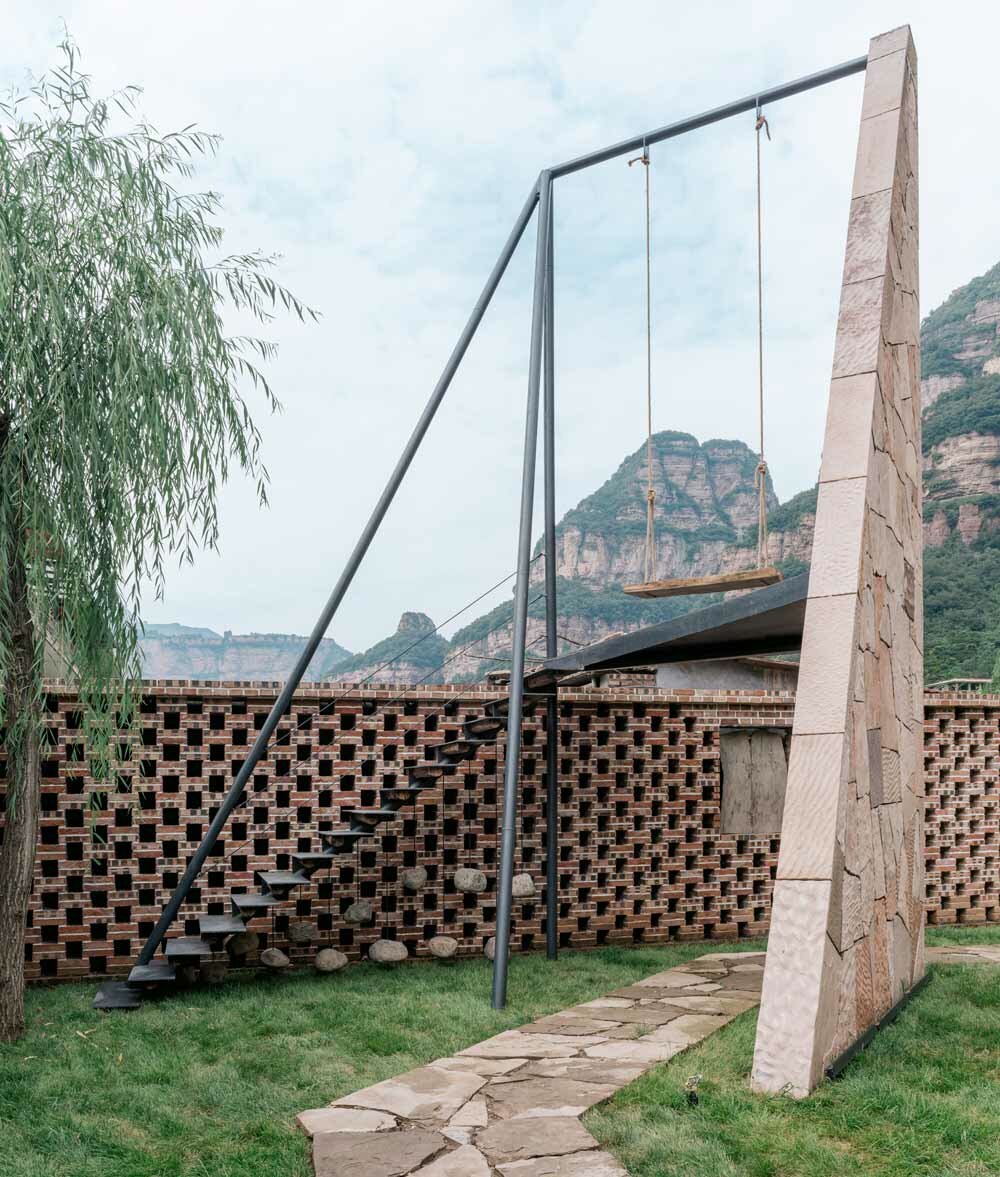
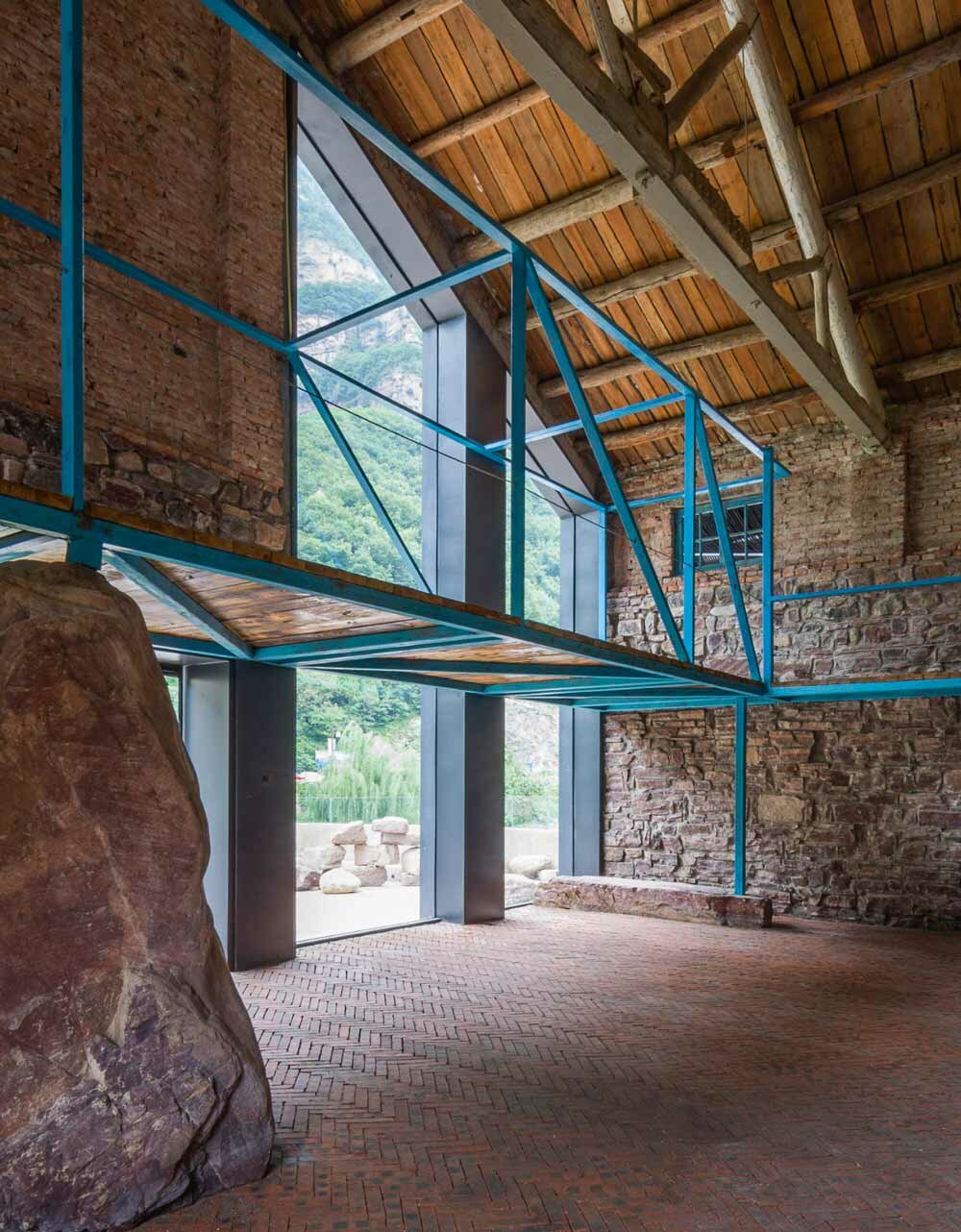
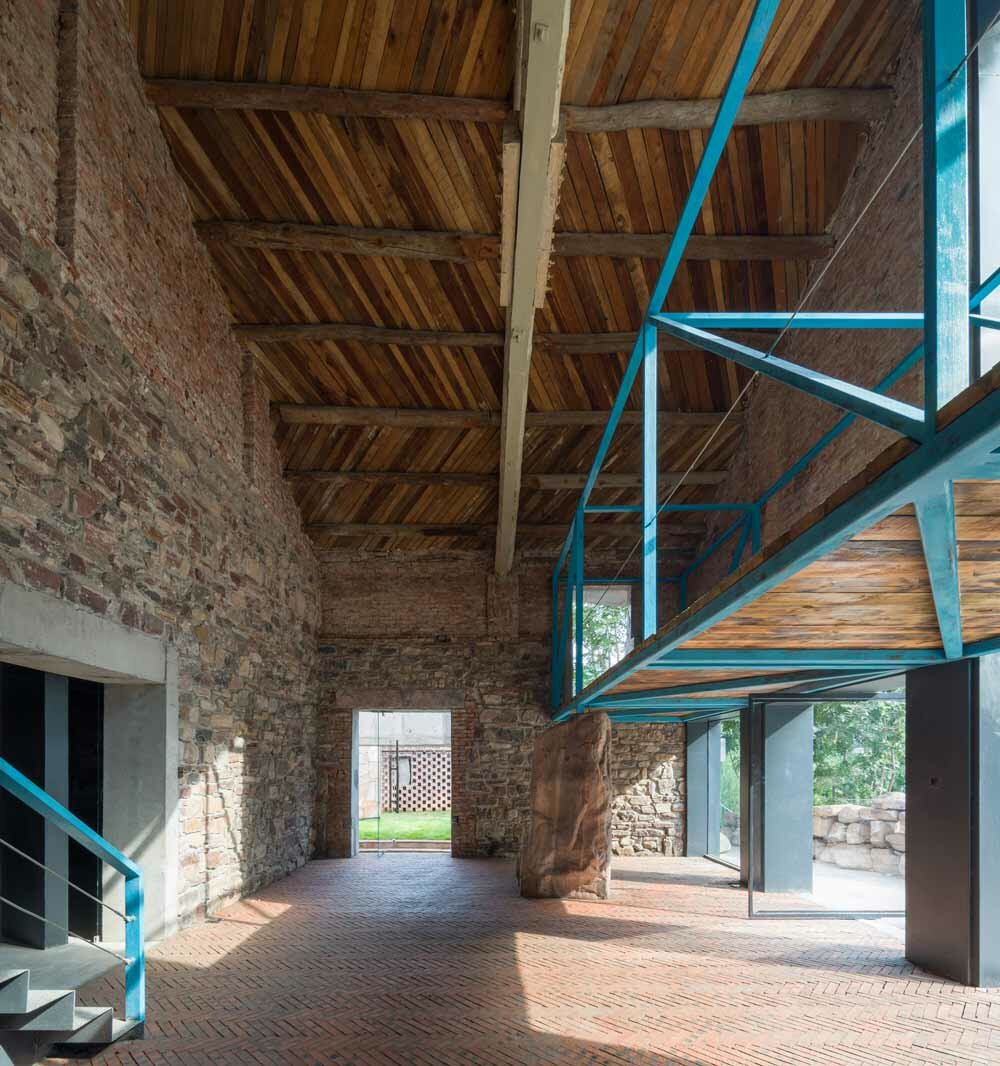
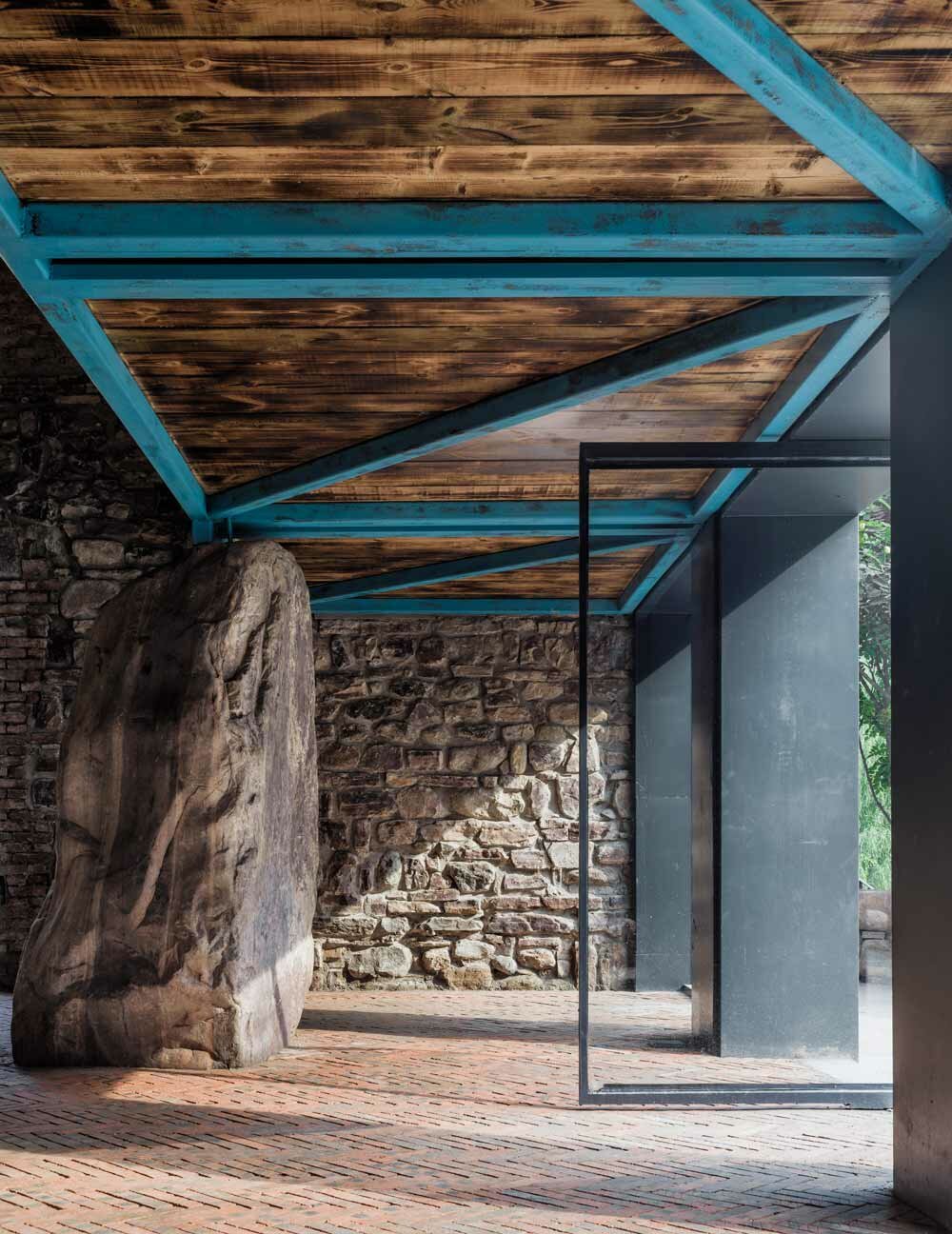

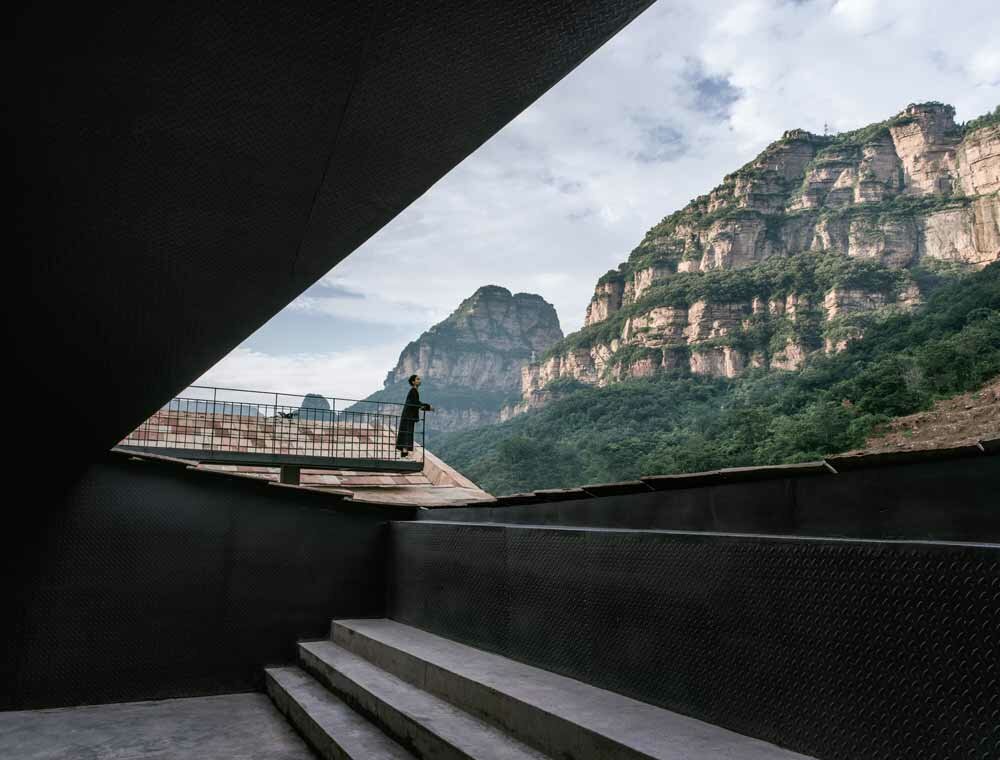
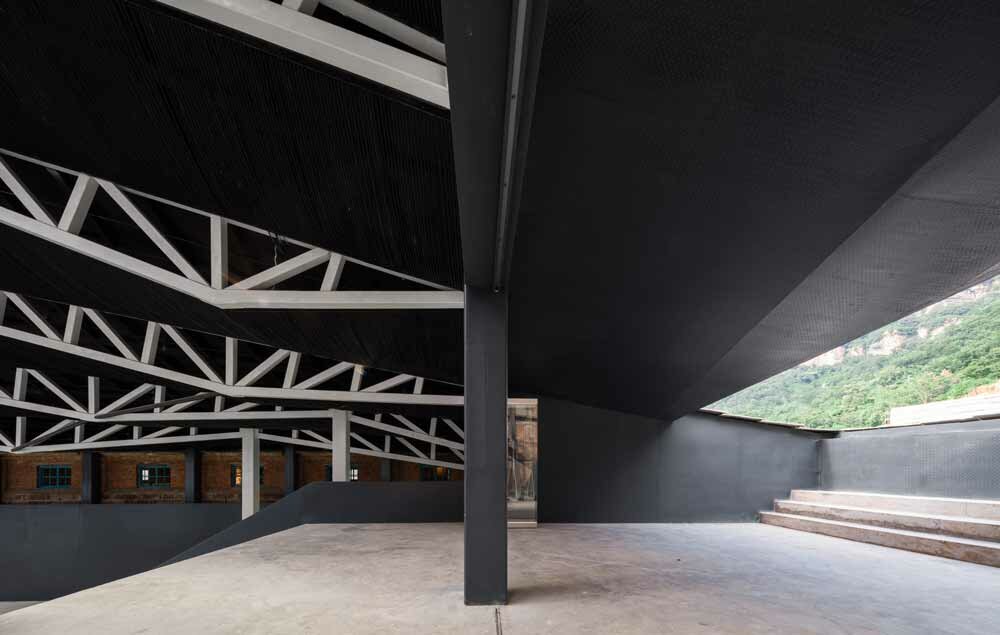




























project info:
name: Taihang Xinyu Art Museum
design company: Wang Chong Studio
design guidance: Mr. Zhang Baowei, Zhang Yifei, Zhang Dongguang
construction: Shi Yusheng, Zhao Cun
deepening and construction: Dang Fuzan, Huaan Installation Engineering Co., Ltd.
location: Shibanyan Town, Linzhou, Anyang, Henan
area: 1500 sqm
completion time: October 2022
artist: Meng Xinyu
photography: Zhu Yumeng Coppak Studio















